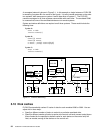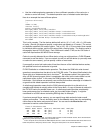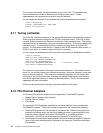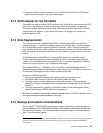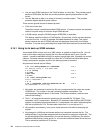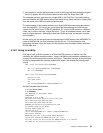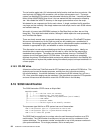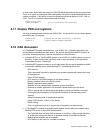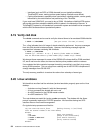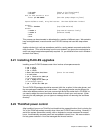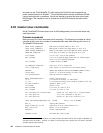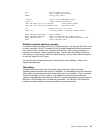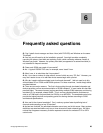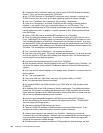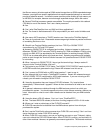58 S/390 PID: ThinkPad Enabled for S/390
– Interfaces (such as SCSI or S/390 channels) are not typically available to
ThinkPad/EFS users, making routine system backup functions more difficult.
– Cooling effectiveness, especially when used without a docking station, can be greatly
influenced by the exact location and positioning of the ThinkPad.
If you must have S/390 RAS, you need to buy a S/390. We believe a Netfinity/EFS system
will provide more than adequate reliability within its place in the hierarchy of servers. A
ThinkPad/EFS system is not intended as a production system and should not be compared
with the RAS characteristics of production systems.
5.19 Verify ckd disk
The chkckd command can be used to verify the internal format of an emulated S/390 ckd disk:
# ckdchk -a /s391/WORK01 (Use your correct file name, of course)
The -a flag indicates that a full range of checks should be performed. Any error messages
from this utility should be taken seriously. However, the following message might be
expected from volumes containing VM minidisks:
$ ckdchk -a /s390/OS39M1
FSIDU166 [cyl = 99 head = 14 rec = 1] Record cylinder number on “OS39M1”
does not match home address cylinder number (hacyl: 0x0063 reccyl: 0x0d70)
We also get these messages for some of the OS/390 AD volumes built for P/390 emulated
I/O; we do not know the cause, but have not had any other problems with the volumes.
If an emulated ckd drive contains improper formatting, something is very likely to go wrong
during S/390 operation. This can range from crashing one of the FLEX-ES components to
strange messages from OS/390 IOS.
The only recovery possible is to restore the volume from a backup of some type.
5.20 Linux windows
We found that we often had four windows (terminal emulation progrms) open on the Linux
desktop:
– A window running flexescli (with the flexes prompt)
– A Linux command line window with su to root
– An x3270 session for the OS/390 master console
– An x3270 session for TSO
The root window was useful for issuing resadm commands. The window with the flexes
prompt is generally required for FLEX-ES operation. We found that having two 3270
sessions was our most useful arrangement.
Our typical startup process went like this:
Log into Linux with userid flexes (working directory is /usr/flexes)
Start two terminal windows on the Linux desktop
Window 1
$ su (enter root password)
# cd rundir (change to /usr/flexes/rundir)
# resadm -s R10A.rescf (start FLEX-ES resources)
# resadm -r (verify resources started)
Window 2



